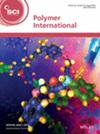Montira Sriyai, Tawan Chaiwon, Robert Molloy, Patnarin Worajittiphon, Puttinan Meepowpan, Winita Punyodom
求助PDF
{"title":"Bulk ring-opening polymerization of l-lactide with an effective liquid tin(II) n-butoxide initiator for biomedical applications: a comparative kinetics study","authors":"Montira Sriyai, Tawan Chaiwon, Robert Molloy, Patnarin Worajittiphon, Puttinan Meepowpan, Winita Punyodom","doi":"10.1002/pi.70003","DOIUrl":null,"url":null,"abstract":"<p>In this study, liquid tin(II) <i>n</i>-butoxide (Sn(O<i>n</i>Bu)<sub>2</sub>) is employed as an initiator in the bulk ring-opening polymerization of <span>l</span>-lactide. Its effectiveness is compared with the conventional tin(II) octoate/<i>n</i>-butanol (Sn(Oct)<sub>2</sub>/<i>n</i>-BuOH) initiating system by analyzing kinetics parameters derived from monomer conversion data obtained through gravimetry, <sup>1</sup>H NMR spectroscopy and Fourier transform infrared (FTIR) spectroscopy. Gravimetry kinetics studies of <span>l</span>-lactide ring-opening polymerization in bulk at 120 °C for 24 h reveal that both Sn(O<i>n</i>Bu)<sub>2</sub> and Sn(Oct)<sub>2</sub>/<i>n</i>-BuOH achieve high conversions (>90%), with first-order rate constants of 0.0432 and 0.0157 min<sup>−1</sup>, respectively. These results indicate that the highly soluble liquid Sn(O<i>n</i>Bu)<sub>2</sub> leads to a faster polymerization rate and higher molecular weight (<i>M</i><sub>n</sub> = 1.45 × 10<sup>4</sup> g mol<sup>−1</sup>) than Sn(Oct)<sub>2</sub>/<i>n</i>-BuOH (<i>M</i><sub>n</sub> = 6.03 × 10<sup>3</sup> g mol<sup>−1</sup>). However, kinetics studies using <sup>1</sup>H NMR and FTIR suggest that liquid Sn(O<i>n</i>Bu)<sub>2</sub> and Sn(Oct)<sub>2</sub>/<i>n</i>-BuOH exhibit similar effectiveness in terms of monomer conversion. Finally, the high efficiency of liquid Sn(O<i>n</i>Bu)<sub>2</sub> is demonstrated in the first-time synthesis of medical-grade poly(<span>l</span>-lactide) at a large scale (500 g). This advancement paves the way for biomedical applications, such as absorbable surgical sutures, demonstrating performance comparable to commercial medical-grade poly(<span>l</span>-lactide) products. © 2025 Society of Chemical Industry.</p>","PeriodicalId":20404,"journal":{"name":"Polymer International","volume":"74 11","pages":"990-1002"},"PeriodicalIF":3.6000,"publicationDate":"2025-07-15","publicationTypes":"Journal Article","fieldsOfStudy":null,"isOpenAccess":false,"openAccessPdf":"","citationCount":"0","resultStr":null,"platform":"Semanticscholar","paperid":null,"PeriodicalName":"Polymer International","FirstCategoryId":"92","ListUrlMain":"https://scijournals.onlinelibrary.wiley.com/doi/10.1002/pi.70003","RegionNum":4,"RegionCategory":"化学","ArticlePicture":[],"TitleCN":null,"AbstractTextCN":null,"PMCID":null,"EPubDate":"","PubModel":"","JCR":"Q2","JCRName":"POLYMER SCIENCE","Score":null,"Total":0}
引用次数: 0
引用
批量引用
Abstract
In this study, liquid tin(II) n -butoxide (Sn(On Bu)2 ) is employed as an initiator in the bulk ring-opening polymerization of l -lactide. Its effectiveness is compared with the conventional tin(II) octoate/n -butanol (Sn(Oct)2 /n -BuOH) initiating system by analyzing kinetics parameters derived from monomer conversion data obtained through gravimetry, 1 H NMR spectroscopy and Fourier transform infrared (FTIR) spectroscopy. Gravimetry kinetics studies of l -lactide ring-opening polymerization in bulk at 120 °C for 24 h reveal that both Sn(On Bu)2 and Sn(Oct)2 /n -BuOH achieve high conversions (>90%), with first-order rate constants of 0.0432 and 0.0157 min−1 , respectively. These results indicate that the highly soluble liquid Sn(On Bu)2 leads to a faster polymerization rate and higher molecular weight (M n = 1.45 × 104 g mol−1 ) than Sn(Oct)2 /n -BuOH (M n = 6.03 × 103 g mol−1 ). However, kinetics studies using 1 H NMR and FTIR suggest that liquid Sn(On Bu)2 and Sn(Oct)2 /n -BuOH exhibit similar effectiveness in terms of monomer conversion. Finally, the high efficiency of liquid Sn(On Bu)2 is demonstrated in the first-time synthesis of medical-grade poly(l -lactide) at a large scale (500 g). This advancement paves the way for biomedical applications, such as absorbable surgical sutures, demonstrating performance comparable to commercial medical-grade poly(l -lactide) products. © 2025 Society of Chemical Industry.
l-丙交酯与有效液态锡(II)正丁醇引发剂的体积开环聚合:生物医学应用的比较动力学研究
本研究以液态锡(II) n-丁醇(Sn(OnBu)2)为引发剂,进行了l-丙交酯的本体开环聚合。通过对单体转化数据的动力学参数进行分析,通过重量法、1H NMR光谱和傅里叶变换红外(FTIR)光谱分析,比较了其与传统的锡(II)八酸盐/正丁醇(Sn(Oct)2/正丁醇)引发体系的有效性。l-丙交酯在120°C下开环聚合24 h的失重动力学研究表明,Sn(OnBu)2和Sn(Oct)2/n-BuOH均获得了较高的转化率(>90%),一级速率常数分别为0.0432和0.0157 min−1。结果表明,高可溶性的Sn(OnBu)2溶液比Sn(Oct)2/n-BuOH溶液(Mn = 6.03 × 103 g mol−1)聚合速度更快,分子量更高(Mn = 1.45 × 104 g mol−1)。然而,利用1H NMR和FTIR进行的动力学研究表明,液态Sn(OnBu)2和Sn(Oct)2/n-BuOH在单体转化方面表现出相似的效果。最后,在首次大规模(500 g)合成医用级聚(l-丙交酯)中,证明了液体Sn(OnBu)2的高效率。这一进步为生物医学应用铺平了道路,例如可吸收的外科缝合线,展示了与商业医疗级聚(l-丙交酯)产品相当的性能。©2025化学工业协会。
本文章由计算机程序翻译,如有差异,请以英文原文为准。


 求助内容:
求助内容: 应助结果提醒方式:
应助结果提醒方式:


